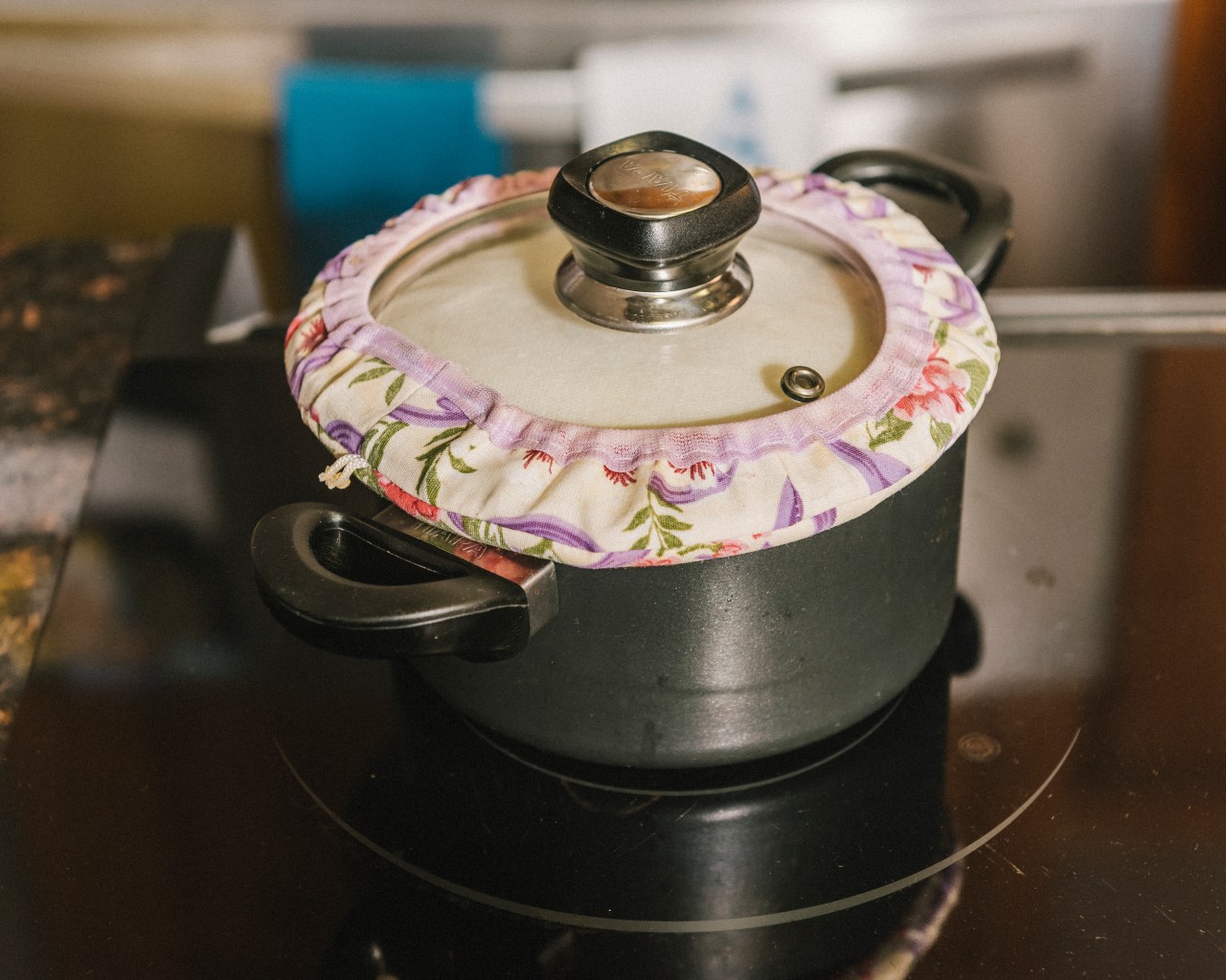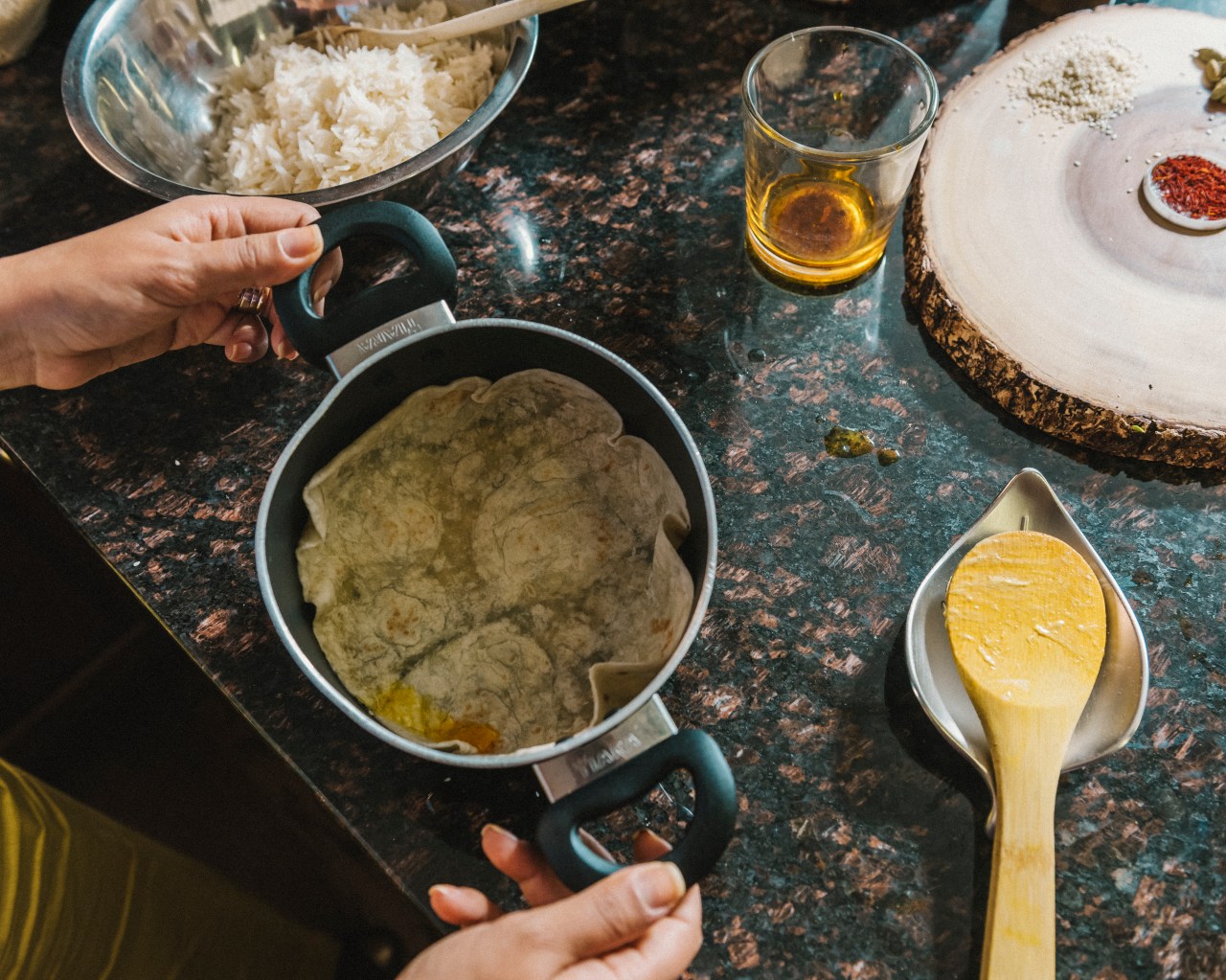The Persian method of rice making is very different and quite involved when compared with those of other rice-consuming cultures. It can seem long and intimidating, but the key virtue in the Persian culinary tradition is patience. Making good Persian food is an art. The most important point to keep in mind is that Persians don’t use any type of rice except basmati. And they definitely use a nonstick pan.
Persian rice cooking also has a few tricks that you won’t find in other rice-loving nations. There are washing, boiling, draining, and finally steaming methods to cook your rice perfectly. For example, Iranians generally cover their rice with a damkoni (a fitted fabric pot-lid cover) when steaming it to prevent the vapor from escaping. Persian rice is best served immediately right out of the pot, when it is still hot and buttery.
A couple of words you will find useful as you begin your journey into Persian rice: Berenj is a generic term for grains; chelow means cooked plain rice, but it doesn’t refer to any particular variety.

How to cook rice the Persian way
Measure out the rice and place in a bowl. For every cup of water, you need half a cup of rice; here we’ll use six cups of water to three cups of rice. Wash the rice a few times until the water is clear. This is a crucial Persian technique; washing the rice removes the starch. Add two or three pinches of salt and let the rice soak for a few hours; this allows the rice to soften as it absorbs water. My grandmother strongly believed the rice should sit overnight, but my mom soaks her rice for only one or two hours before starting the epic cooking process. (I have always followed my mom’s way. I think if the rice sits overnight, it absorbs too much water and ends up being mushy.) Bring the water to a vigorous boil, then add a pinch of salt to the boiling water. Place the rice in the boiling water and cook for about 10 minutes. Another of my mom’s essential tips is adding a cup of cold water to the pot after eight minutes of boiling. This slows down the boiling process and helps the rice elongate without becoming overcooked. It also prevents the rice from falling apart or losing its shape. Stir the rice a couple of times; after about 10 minutes, taste it. It should be soft but not mushy. Once it reaches this point, drain it in a strainer and give it a quick rinse with cold water to wash the salt away.

This is a two-part steaming process. Place the tahdeeg (see below) on the bottom of the pot (you’ll want to prepare it before the rice), then pile the rice on top in the shape of a pyramid or mountain. Dig several wells in the rice with the handle of a spatula for better steaming. Wrap the lid in a damkoni. Cover and cook on medium-high for 10 minutes, never more. While the rice steams, melt three or four tablespoons of cooking oil or butter. After the 10 minutes, reduce the heat to low and lift the lid. Pour the hot oil or butter evenly over the rice, then replace the lid firmly on the pot and cook on low for an hour.
Tahdeeg: In Farsi, deeg is pot and tah means bottom—so tahdeeg literally means “bottom of the pot.” It is the golden, crunchy-crisp layer at the bottom of the pot, and it is one of the main components of any Persian meal. Every platter of rice must be served with this top-notch accessory. Iranians are seriously in love with their versions of tahdeeg, and it’s common to see them jokingly fight over it. it is not unusual for non-Iranians to fall in love with tahdeeg as well once they’ve tried it. Many of my American friends have asked me to teach them how to make it.
Persians make several variations of tahdeeg, but the simplest and therefore the most common way of creating tasty and delicate tahdeeg is to place a thin flatbread known as lavash on the bottom of the pot with butter and splashes of brewed saffron (we use saffron thread or stigma brewed in hot water like tea). A flour tortilla is the best commonly available replacement for lavash, and very thinly sliced potatoes will also get you the crunchy texture you want.
The most glorious version of tahdeeg is also the most complicated to make. Combine a tablespoon of yogurt, an egg, and a tablespoon of brewed saffron with two spatulas of boiled rice in a bowl and gently mix with a fork until the mixture is thick and yellow. Then spread the mixture evenly on the bottom of the pot with two tablespoons of melted butter; it turns into the greatest base for the golden rice cake.
There are other less prominent but equally mouthwatering tahdeeg bases. In many parts of Iran, people use fresh leaves of Romaine lettuce as the base of herbed rice. The crunchy green base is delectable with its mountain of earthy rice. Another exquisite base for tahdeeg is grape leaves, or barge mo. It can be used for both plain and herbed rice; I personally prefer it with herbed rice.

Polow: These mixed rice dishes also include tahdeeg. Since the ancient era of the Persian Empire, any time Persians cooked rice with other ingredients, particularly meat, herbs, nuts, and various spices, they called it pilaw, or, in the modern Farsi accent, polow. According to Dehkhoda Dictionary, the largest, most comprehensive Persian dictionary ever published, the first polow is known to be a combination of cooked rice, meat, lentils, raisins, and dates. That combination is still popular today and is known as adas polow (lentil rice).
These days Iranians make many types of polow. Here are some of the best-known, tastiest ones:
Sabzi polow, or herbed rice: The highly fragrant herbed rice is scented with dill, mint, and other soft herbs, along with saffron. Use tender stems and sprigs. Sabzi polow is famously served with fried fish—we use various types of saltwater white-meat fish as well as freshwater trout—as the celebratory dish on the eve of Nowruz, the Persian New Year.
Baghali polow: This polow is mixed with fava beans and dill and served with lamb shank or chicken.


Zereshk polow: This polow consists of rice mixed with barberries and saffron and is most often served with pieces of cooked chicken.
Lobia polow: Sometimes referred to as green-bean rice, this is a complete meal of rice, green beans, beef, tomato paste, and fried onion. It is spiced with saffron and cinnamon.
Polow tahchin: Tahchin means “placed in the bottom of the pot,” and the ingredients of this polow are layered in the bottom of a pot. They consist of rice, chicken, orange peels, pistachios, almonds, saffron, cardamom, and cinnamon. It is very fragrant and colorful. This is the most internationally known mixed-rice dish of Persian cuisine.
